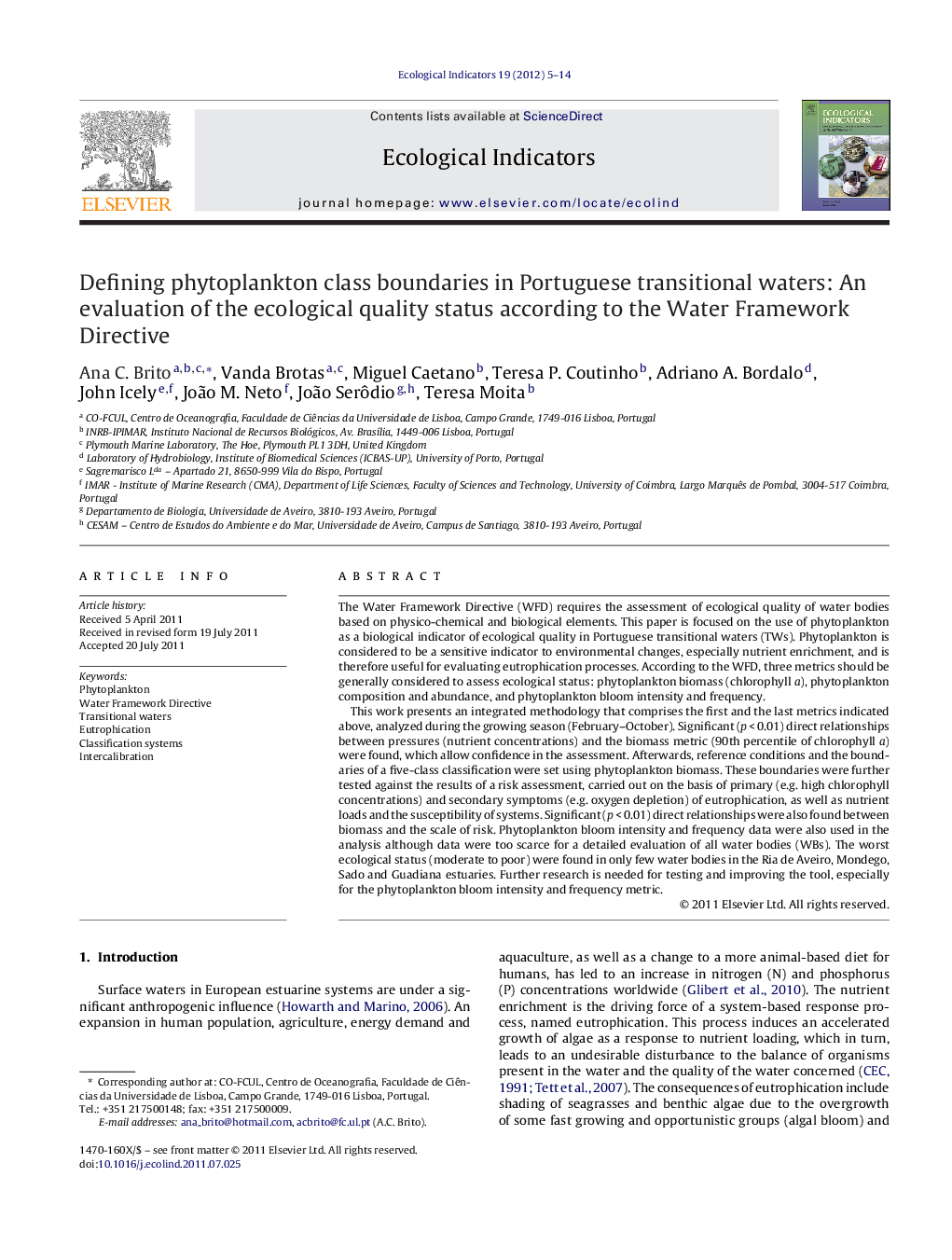| کد مقاله | کد نشریه | سال انتشار | مقاله انگلیسی | نسخه تمام متن |
|---|---|---|---|---|
| 4373707 | 1617181 | 2012 | 10 صفحه PDF | دانلود رایگان |

The Water Framework Directive (WFD) requires the assessment of ecological quality of water bodies based on physico-chemical and biological elements. This paper is focused on the use of phytoplankton as a biological indicator of ecological quality in Portuguese transitional waters (TWs). Phytoplankton is considered to be a sensitive indicator to environmental changes, especially nutrient enrichment, and is therefore useful for evaluating eutrophication processes. According to the WFD, three metrics should be generally considered to assess ecological status: phytoplankton biomass (chlorophyll a), phytoplankton composition and abundance, and phytoplankton bloom intensity and frequency.This work presents an integrated methodology that comprises the first and the last metrics indicated above, analyzed during the growing season (February–October). Significant (p < 0.01) direct relationships between pressures (nutrient concentrations) and the biomass metric (90th percentile of chlorophyll a) were found, which allow confidence in the assessment. Afterwards, reference conditions and the boundaries of a five-class classification were set using phytoplankton biomass. These boundaries were further tested against the results of a risk assessment, carried out on the basis of primary (e.g. high chlorophyll concentrations) and secondary symptoms (e.g. oxygen depletion) of eutrophication, as well as nutrient loads and the susceptibility of systems. Significant (p < 0.01) direct relationships were also found between biomass and the scale of risk. Phytoplankton bloom intensity and frequency data were also used in the analysis although data were too scarce for a detailed evaluation of all water bodies (WBs). The worst ecological status (moderate to poor) were found in only few water bodies in the Ria de Aveiro, Mondego, Sado and Guadiana estuaries. Further research is needed for testing and improving the tool, especially for the phytoplankton bloom intensity and frequency metric.
Journal: Ecological Indicators - Volume 19, August 2012, Pages 5–14